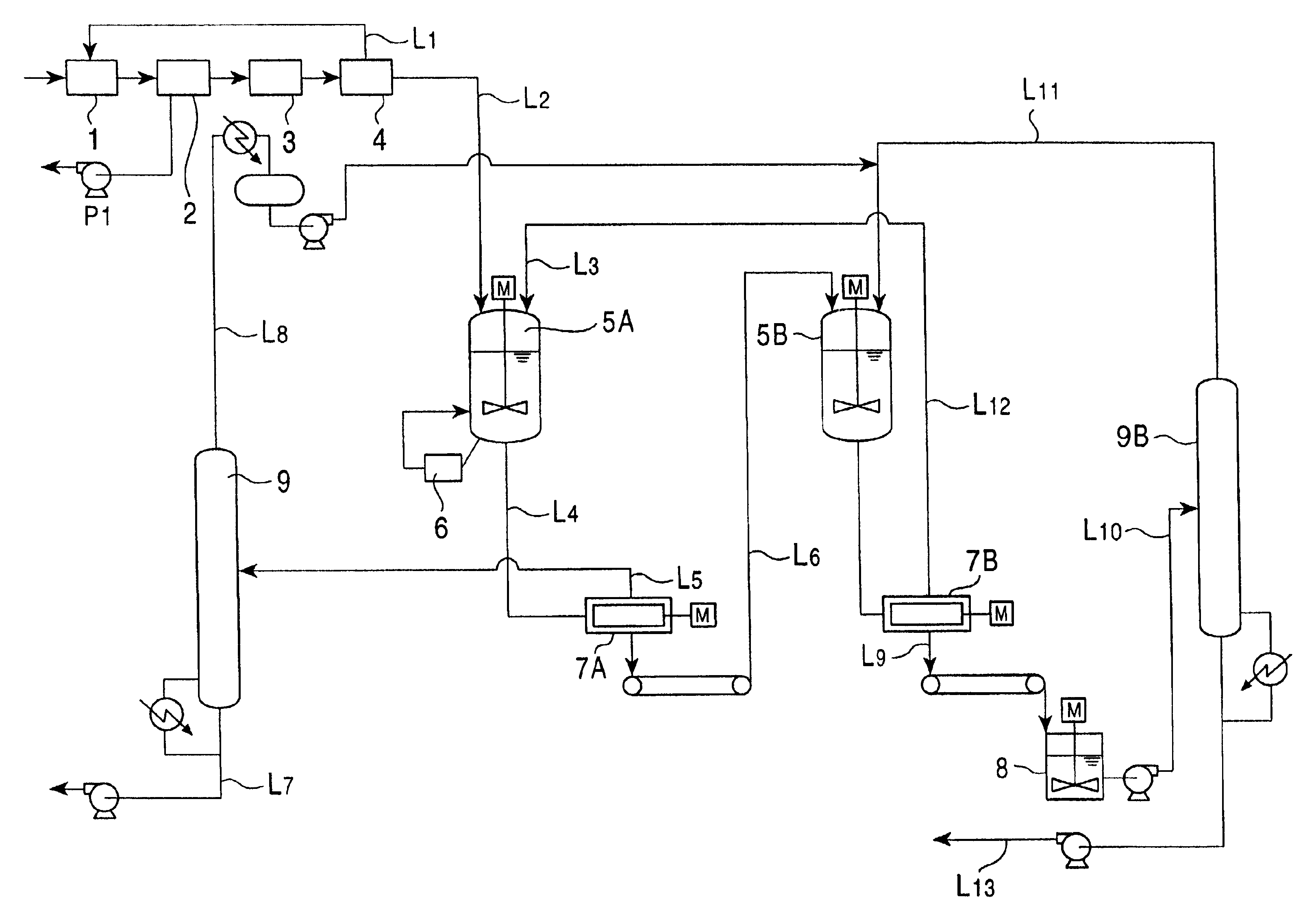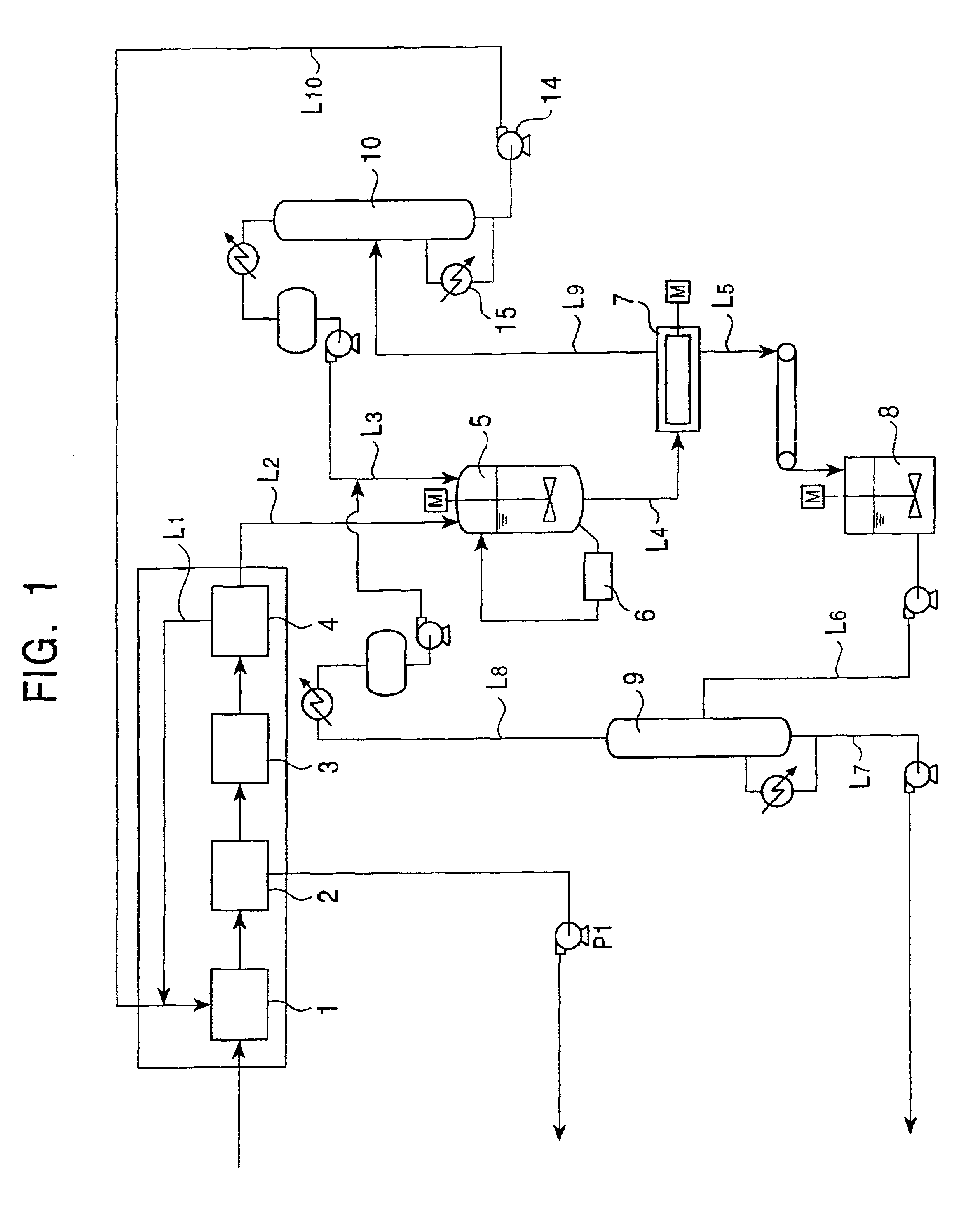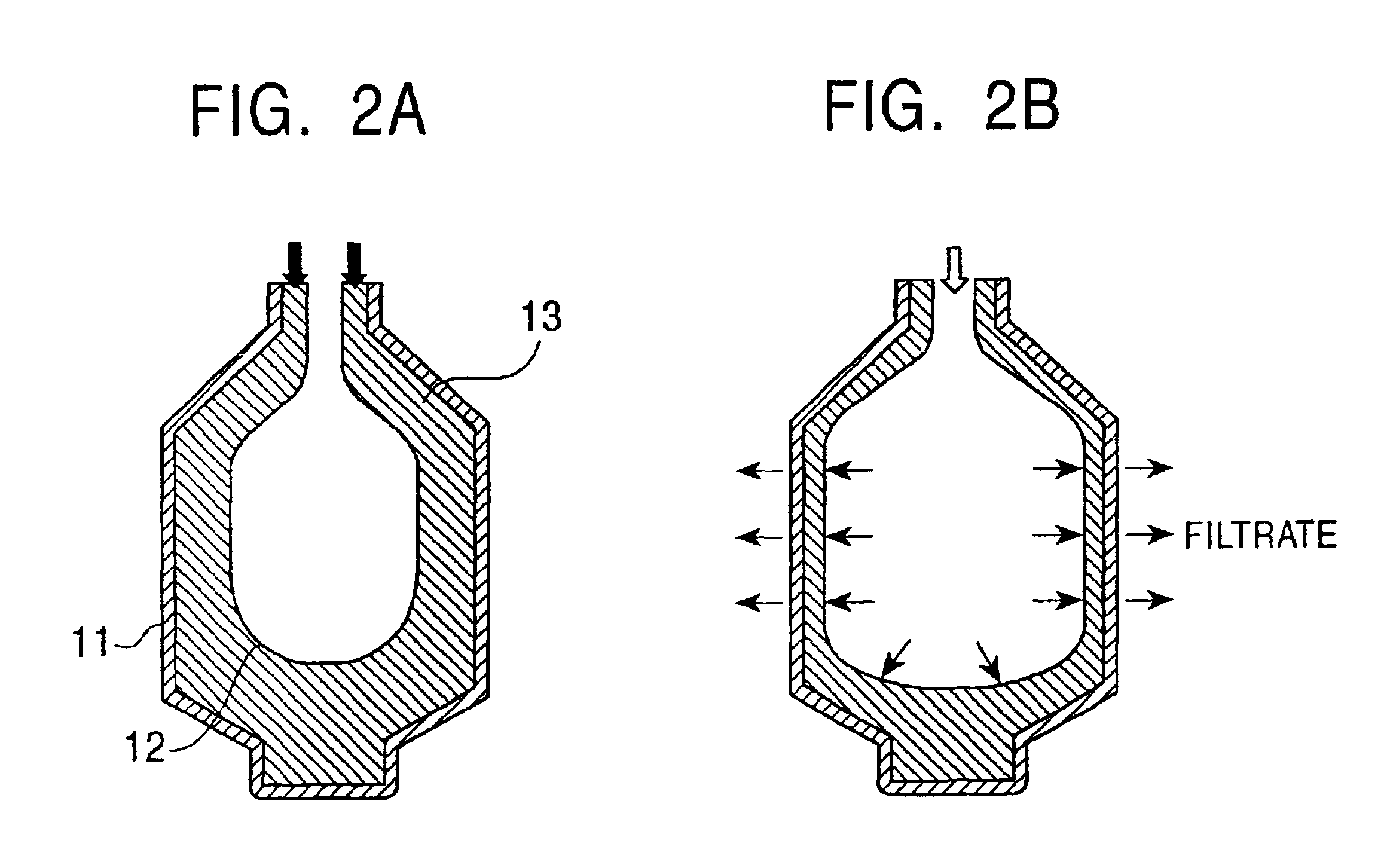Method for producing 2,6-dimethylnaphthalene
a technology of dimethyl naphthalene and dimethyl naphthalene, which is applied in the direction of hydrocarbon purification/separation, chemistry apparatus and processes, organic chemistry, etc., can solve the problems of difficult to obtain a highly pure 2,6-dmn therefrom by distillation, and difficult to obtain a highly pure 2,6-dmn, etc., to achieve high purity
- Summary
- Abstract
- Description
- Claims
- Application Information
AI Technical Summary
Benefits of technology
Problems solved by technology
Method used
Image
Examples
example 1
[0041]A feedstock (mixture containing DMN isomers) having the composition shown in Table 1 was crystallized at 9° C. and was then processed by press filtration at approximately 100 kg / cm2, thereby obtaining a cake of the mixture containing DMN isomers having the composition shown in Table 1. Next, 100 g of this crystal of the mixture containing DMN isomers and 200 g of normal hexane were placed in a separable flask provided with a stirrer and were then stirred at 30° C. for 1 hour. Subsequently, after a crystal was separated by suction filtration, 100 g of a pure solvent was poured over the crystal. When the crystal was analyzed using gas chromatography, it was found that a crystal having the composition shown in Table 1 was obtained. As “other impurities”, there were methylnaphthalene, ethylnaphthalene, hydrocarbons having boiling points equivalent to those of the other DMN's, and the like.
[0042]
TABLE 1Cake afterFiltrate afterCrystalCoolingCoolingafterCompositioncrystallization / cry...
example 2
[0044]A cake of a mixture containing DMN isomers having the composition shown in Table 2 and a crystal formed therefrom after washing were obtained in a manner equivalent to that in example 1 except that a feedstock (mixture containing DMN isomers) having the composition shown in Table 2 was crystallized at 15° C. in a first stage and was then crystallized at 70° C. in a second stage, and that press filtration was performed at approximately 100 kg / cm2 after each cooling crystallization mentioned above.
[0045]
TABLE 2Cake after FirstFiltrate afterCake afterFiltrate afterCrystal afterCompositionCoolingFirst CoolingSecond CoolingSecond CoolingWashing(wt %)FeedstockCrystallizationCrystallizationCrystallizationCrystallization(Example 2)2,6-DMN11.6858.0011.2180.0452.6199.162,7-DMN12.036.0012.094.926.280.80Other DMN26.2315.0026.3413.3615.44Below DetectionisomersLimitOther50.0621.0050.352.5825.660.04ImpuritiesTotal100.00100.00100.00100.00100.00100.00
[0046]The yield with respect to 2,6-DMN in ...
example 3
[0047]A cake of a mixture containing DMN isomers having the composition shown in Table 3 and a crystal formed therefrom after washing were obtained in a manner equivalent to that in example 1 except that a feedstock (mixture containing DMN isomers) having the composition shown in Table 3 was crystallized at 3° C. and was then processed by solid-liquid separation using a centrifuge in a first stage, and in a second stage, a crystal was precipitated at 65.8° C. and was then processed by press filtration using a tube press at an operation pressure of 100 kg / cm2. As the tube press in this example, TPS-1 provided with temperature control function manufactured by Ashizawa Co., Ltd. was used in which the filtration area was 0.45 m2 and the inside volume was 17 liter.
[0048]
TABLE 3Cake after FirstFiltrate afterCake afterFiltrate afterCrystal afterCompositionCoolingFirst CoolingSecond CoolingSecond CoolingWashing(wt %)FeedstockCrystallizationCrystallizationCrystallizationCrystallization(Examp...
PUM
| Property | Measurement | Unit |
|---|---|---|
| temperature | aaaaa | aaaaa |
| temperature | aaaaa | aaaaa |
| temperature | aaaaa | aaaaa |
Abstract
Description
Claims
Application Information
 Login to View More
Login to View More - R&D
- Intellectual Property
- Life Sciences
- Materials
- Tech Scout
- Unparalleled Data Quality
- Higher Quality Content
- 60% Fewer Hallucinations
Browse by: Latest US Patents, China's latest patents, Technical Efficacy Thesaurus, Application Domain, Technology Topic, Popular Technical Reports.
© 2025 PatSnap. All rights reserved.Legal|Privacy policy|Modern Slavery Act Transparency Statement|Sitemap|About US| Contact US: help@patsnap.com



